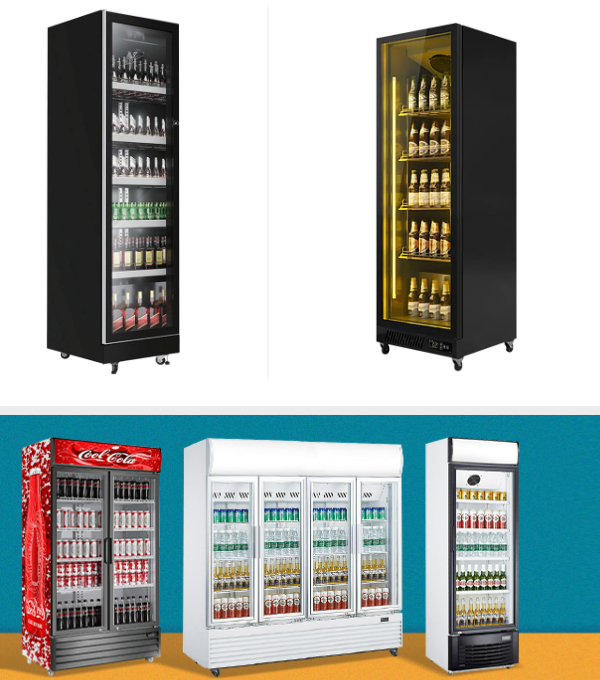Ust before June 2025, an announcement from the US Department of Commerce sent shockwaves through the global home appliance industry. Starting from June 23, eight categories of steel – made home appliances, including combined refrigerators, washing machines, freezers, etc., were officially included in the scope of the Section 232 investigation tariffs, with a tariff rate as high as 50%. This is not an isolated move but a continuation and expansion of the US steel trade restriction policy. From the “Implementation of Steel Tariffs” announcement in March 2025, to the public comment on the “inclusion procedure” in May, and then to the extension of the tax scope from steel parts to complete machines this time, the US is constructing a “tariff barrier” for imported steel – made home appliances through a progressive series of policies.
It is worth noting that this policy clearly differentiates the tax rules for “steel components” and “non – steel components”. Steel components are subject to a 50% Section 232 tariff but are exempt from the “reciprocal tariff”. Non – steel components, on the other hand, need to pay the “reciprocal tariff” (including a 10% basic tariff, a 20% fentanyl – related tariff, etc.) but are not subject to the Section 232 tariff. This “differential treatment” subjects home appliance products with different steel contents to different cost pressures.
I. A Perspective on Trade Data: The Significance of the US Market for Chinese Home Appliances
As a global hub for home appliance manufacturing, China exports a significant volume of the products involved to the US. Data from 2024 shows that:
The export value of refrigerators and freezers (including parts) to the US reached 3.16 billion US dollars, a year – on – year increase of 20.6%. The US accounted for 17.3% of the total export volume of this category, making it the largest market.
The export value of electric ovens to the US was 1.58 billion US dollars, accounting for 19.3% of the total export volume, and the export volume increased by 18.3% year – on – year.
The kitchen waste disposer is even more dependent on the US market, with 48.8% of the export value flowing to the US, and the export volume accounting for 70.8% of the global total.
Looking at the trend from 2019 – 2024, except for electric ovens, the export values of the other categories involved to the US showed a fluctuating upward trend, which fully demonstrates the importance of the US market to Chinese home appliance enterprises.
II. How to Calculate the Cost? Steel Content Determines the Tariff Increase
The impact of tariff adjustments on enterprises is ultimately reflected in cost accounting. Take a Chinese – made refrigerator with a cost of 100 US dollars as an example:
If the steel accounts for 30% (i.e., 30 US dollars), and the non – steel part is 70 US dollars;
Before the adjustment, the tariff was 55% (including “reciprocal tariff”, “fentanyl – related tariff”, “Section 301 tariff”);
After the adjustment, the steel component needs to bear an additional 50% Section 232 tariff, and the total tariff rises to 67%, increasing the cost per unit by approximately 12 US dollars.
This means that the higher the steel content of a product, the greater the impact. For light – duty home appliances with a steel content of around 15%, the tariff increase is relatively limited. However, for products with a high steel content such as freezers and welded metal frames, the cost pressure will rise significantly.
III. The Chain Reaction in the Industrial Chain: From Price to Structure
The US tariff policy is triggering multiple chain reactions:
For the US domestic market, the increase in the cost of imported home appliances will directly push up the retail price, which may suppress consumer demand.
For Chinese enterprises, not only will the export profits be compressed, but they also need to face the pressure from competitors such as Mexico. The share of similar home appliances imported by the US from Mexico was originally higher than that from China, and the tariff policy has basically the same impact on enterprises from both countries.
For the global industrial chain, the intensification of trade barriers may force enterprises to adjust their production capacity layout. For example, setting up factories around North America to avoid tariffs will increase the complexity and cost of the supply chain.
VI. Enterprise Response: The Path from Assessment to Action
Facing policy changes, Chinese home appliance enterprises can respond from three aspects:
Cost Re – engineering: Optimize the proportion of steel used in products, explore the substitution of lightweight materials, and reduce the proportion of steel components to mitigate the impact of tariffs.
Market Diversification: Develop emerging markets such as Southeast Asia and the Middle East to reduce dependence on the US market.
Policy Linkage: Closely monitor the subsequent developments of the US “inclusion procedure”, reflect demands through industry associations (such as the Home Appliance Branch of the China Chamber of Commerce for Import and Export of Machinery and Electronic Products), and strive for tariff reductions through compliant channels.
As core players in the global home appliance industry, the responses of Chinese enterprises not only concern their own survival but also will affect the reconstruction direction of the global home appliance trade chain. In the context of the normalization of trade frictions, flexibly adjusting strategies and strengthening technological innovation may be the key to navigating uncertainties.
Post time: Aug-04-2025 Views:

